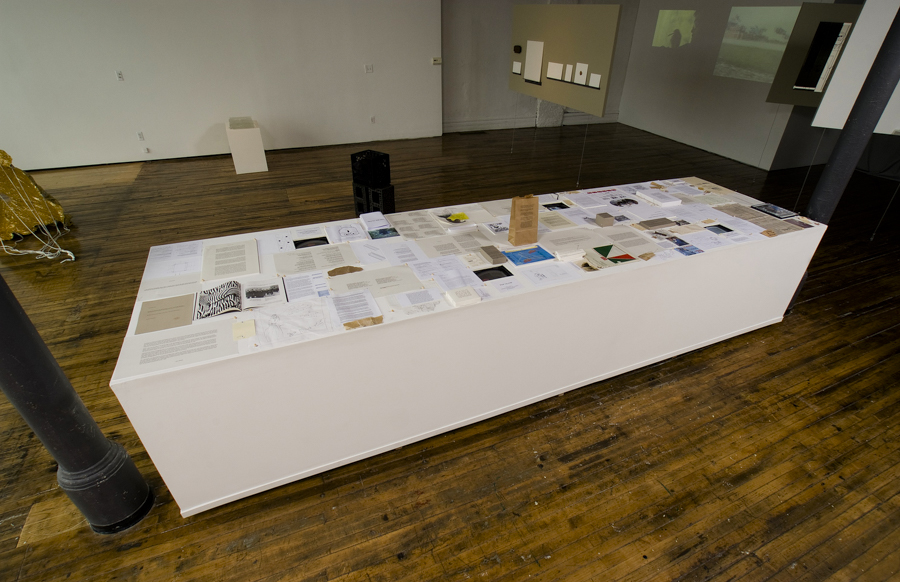Golden Parachutes (Severance)

Sculpture, Text
TOO BIG TO FAIL | April Gallery | Chicago, IL
Visual and Critical Studies Symposium and Exhibition
School of the Art Institute of Chicago
2009
Images and sentiments figure tangibly in our economic order. The vital place of confidence in the market gestures to the workings of public perception, emotion, and belief in market society, a system rooted in the speculation and envisioning of imagined futures. Investors forecast and foresee potential profits (the term speculation itself is rooted in the visual). The language of the market consistently conjures acts of seeing, yet the complex and increasingly interrelated workings of the global economic order often defy simple visualization, making envisioning and comprehending a difficult and piecemeal process.
From Adam Smith's Invisible Hand to the application of a "stress test" and the search for "green shoots," images pervade daily economic language and offer synecdochical glimpses of an imagined Whole. Through representation, metaphors and models construe the way we envision the economic system and our relation to it. It is this interplay between envisioned images and public sentiment in the discourse of economy that gives rise to an economic imaginary of capitalism.
An inquiry of this economic imaginary allows for patterns of allusion to emerge: visual and literary representations summon cultural narratives, naturalist landscapes, and mythic histories. The production and projection of this imaginary remain as integral to the acts of profit-seeking as to those of world-making.
This analysis of the economic imaginary parses the past and present language of public media and political discourse, the vocabulary of finance, and the visual representations of economic activity that perform a role in envisioning capitalism. Rhetorical analysis of everything from terms and syntax to mathematical formulas and graphs (including charts, line graphs, diagrams, and illustrations) attests to the realities of exchange relations as not simply arising from the naming of pre-existing phenomena but as a system that has been molded, activated, and re-fashioned through circulation. The terms double as literal and figurative, and attention to the poetics of economic language—with its inherent contradictions—makes visible past and present projections of global capitalism.
Installation view in group exhibition TOO BIG TO FAIL:

“Bibliography” a collaborative archive of inspirations, conversations, and references [from Szu-Han: including contributions from artists and theorists in response to the question “How do you imagine the economy? Please draw a diagram”]:



Found images related to metaphors of the capitalist economy:


Candlestick charts (inspired by 17th c. Japanese rice traders) used by present-day stock traders:








